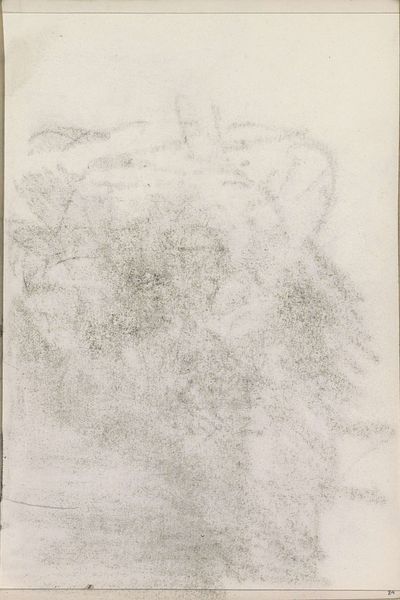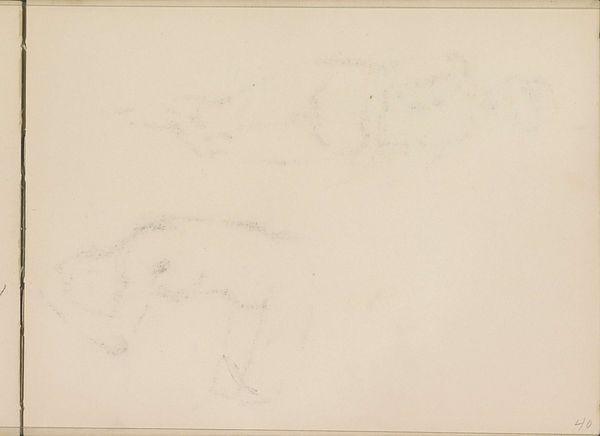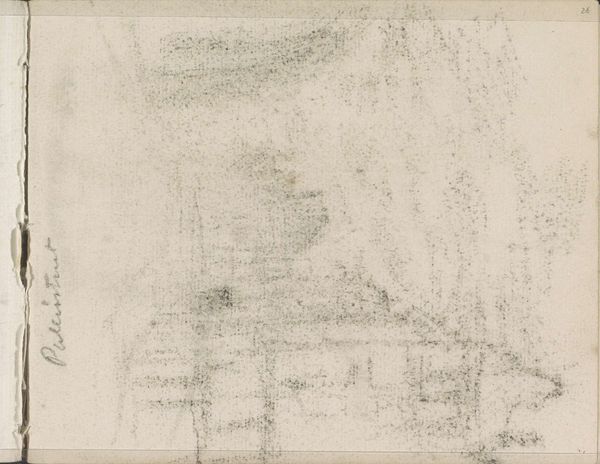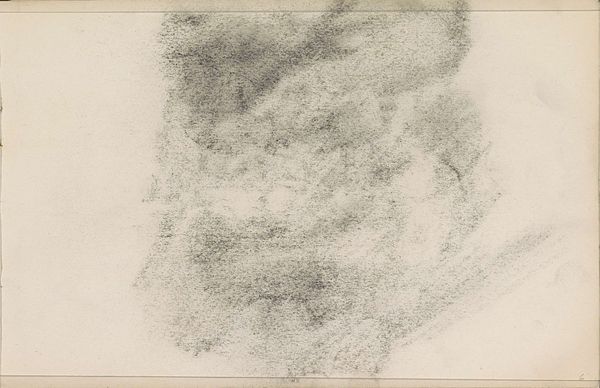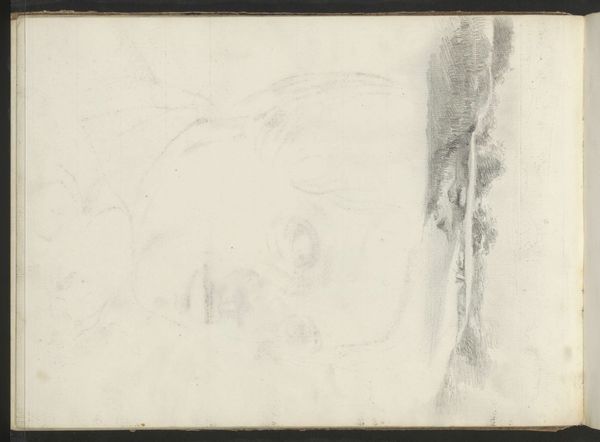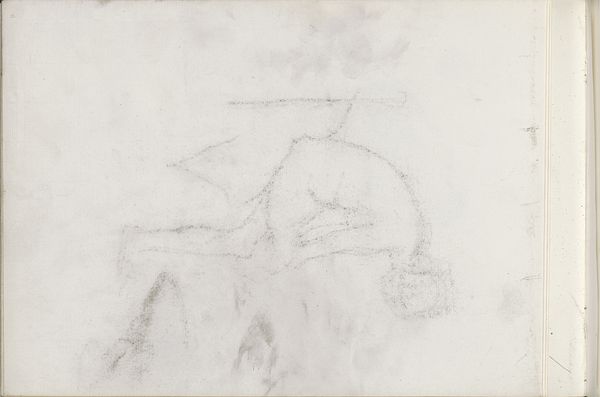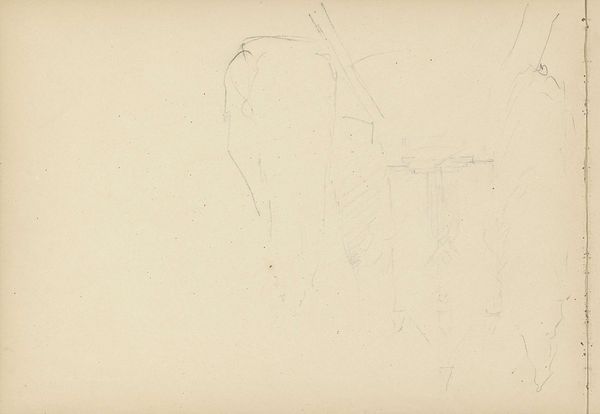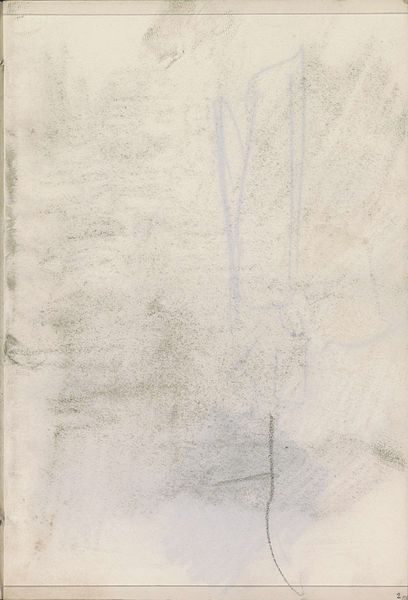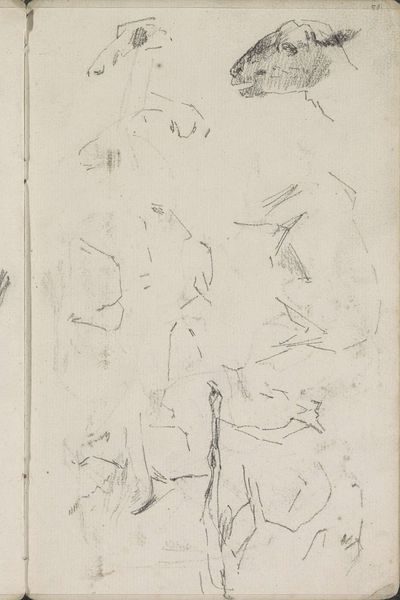
drawing, paper, pencil
#
drawing
#
impressionism
#
pencil sketch
#
landscape
#
figuration
#
paper
#
form
#
pencil
Copyright: Rijks Museum: Open Domain
Curator: Let’s turn our attention now to a pencil drawing by Anton Mauve. It’s called "Abklatsch van een krijttekening," made sometime between 1886 and 1888. It's currently held here at the Rijksmuseum. What's your first impression? Editor: The immediacy is striking. There's an unfinished quality, almost ghostly. It whispers rather than shouts. I wonder what we're meant to see in it. Is this emptiness intentional, a critique perhaps of the very act of representation within its historical context? Curator: That’s interesting. I see it more as a preliminary study. Mauve was a prominent figure in the Hague School, part of a broader movement focused on capturing the Dutch landscape and rural life. This likely relates to that context, as a working sketch for a larger composition, demonstrating the working process common in artistic training during that time. Editor: I'm curious, though. Consider the power dynamics at play in landscape art of this period. The control exerted by those with the means to acquire and represent land, against those whose access was limited, or whose perspectives were actively erased. How might Mauve's landscape speak to these structures of power and dispossession? Curator: Well, certainly the market for landscape art helped shape its development. Dutch patrons and institutions greatly influenced artistic trends. Artists responded to these markets and cultivated public taste through their subjects, techniques, and compositions. Editor: True, but doesn't this sketch, in its fragility, also question the monumentality often associated with traditional landscapes? This ephemeral representation seems to be implicitly arguing against a patriarchal tradition, where grand narratives and heroic ideals have dominated the cultural landscape for far too long, perhaps offering space to envision alternate social futures. Curator: That’s a compelling point. Ultimately, this piece exists as a document of an artist engaging with their environment, their skills, and, you might argue, broader societal influences. Editor: Indeed. Reflecting on it, I feel it invites us to critically analyze landscape representation and how we construct identity through our environments, urging us toward inclusivity in visual narratives.
Comments
No comments
Be the first to comment and join the conversation on the ultimate creative platform.
